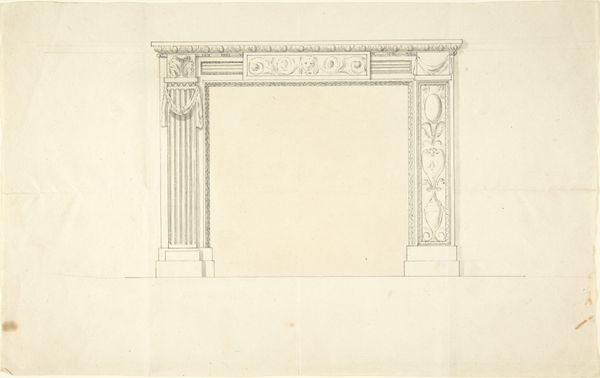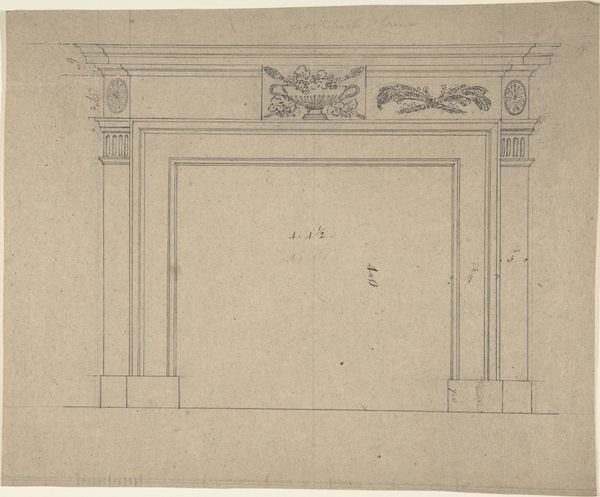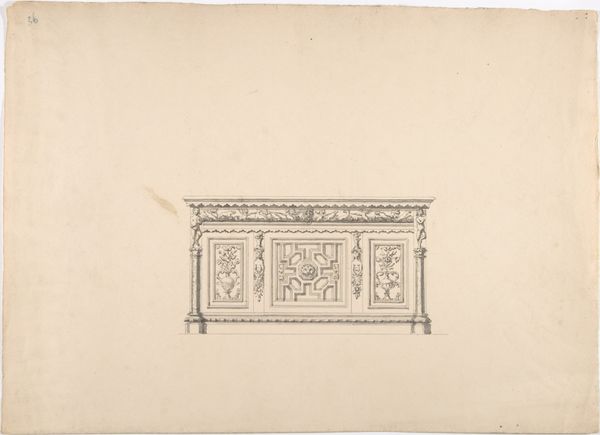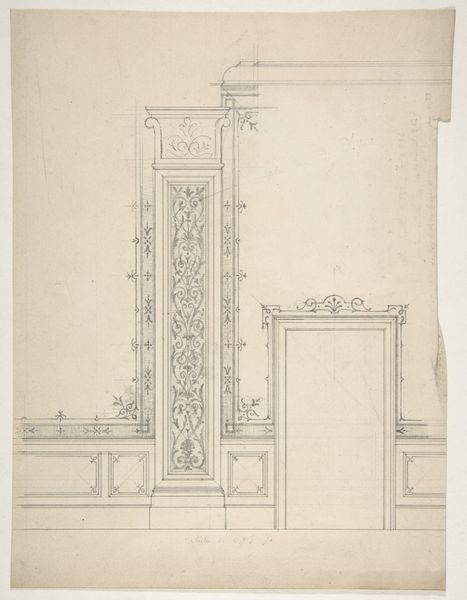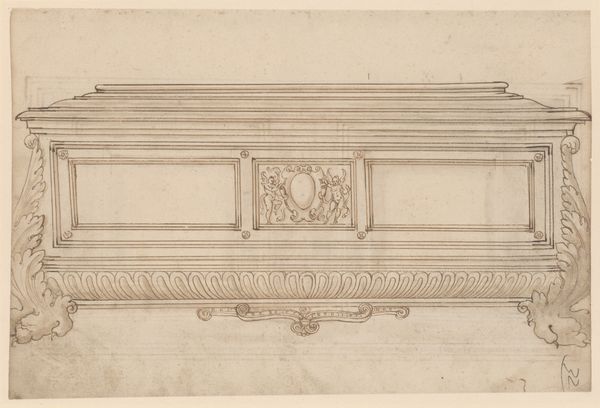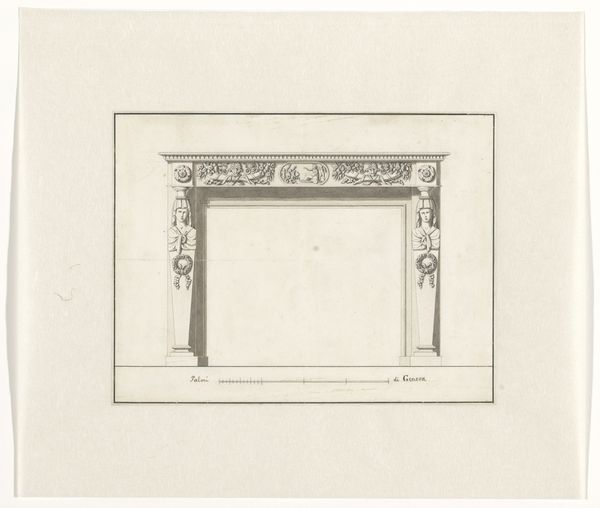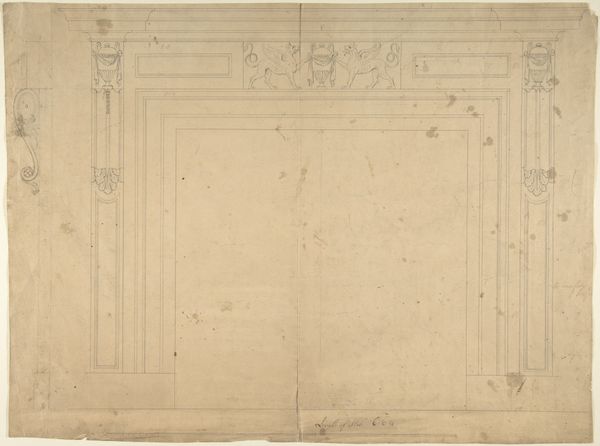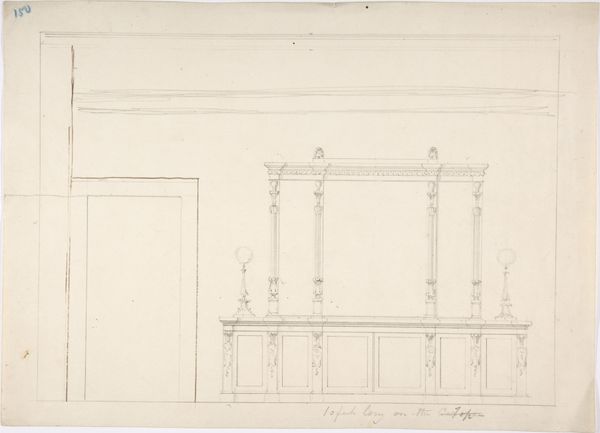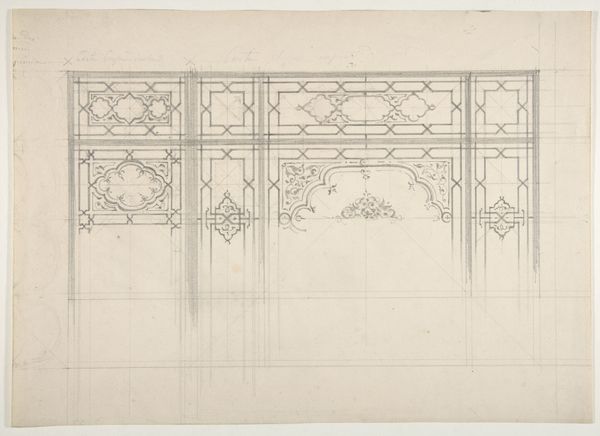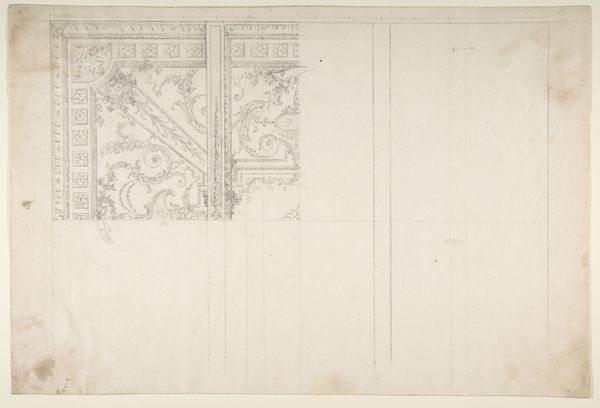
drawing, print, watercolor
#
drawing
#
neoclacissism
#
water colours
# print
#
form
#
watercolor
#
decorative-art
Dimensions: sheet: 8 5/16 x 9 5/8 in. (21.1 x 24.4 cm)
Copyright: Public Domain
Editor: Here we have "Design for a Chimney Piece," dating from between 1770 and 1800. It's a watercolor drawing. I find its pale washes and architectural style surprisingly austere. What's your interpretation? Curator: It speaks volumes about the shifting social values of the late 18th century. Neoclassicism was more than just a style; it was a visual language of order and reason. This design reflects an aristocratic aspiration to connect their lineage to the Ancient Roman Republic which they incorrectly associated with democratic principles. This also occurs within the advent of the Enlightenment period that influenced their aesthetic principles Editor: So the apparent simplicity is actually loaded with socio-political meaning? It wasn't just about aesthetics. Curator: Precisely. This kind of design became a marker of class and political affiliation. The choice of the classical figures that function as capitals on both sides are intended to suggest authority and to provide aesthetic cues that only an educated class could understand. Consider also where these chimney pieces would be located - central to a grand room where power was performed for a limited class of elites. Does this context shift your initial impression of austerity? Editor: Absolutely, thinking of it within that social sphere does change my perspective. The symmetry, the cherubs - it all feels a bit… performative now. Curator: That performance was crucial. It reinforced social hierarchies and asserted cultural dominance. Reflecting on its original purpose is a critical task when viewing and analyzing decorative pieces. Editor: I had considered Neoclassicism as simply revivalist, but understanding the historical setting illuminates its true implications. Curator: Exactly. Art, like this simple drawing, is inherently intertwined with its social and historical contexts. A drawing such as this also helps to illustrate and remind us of those economic structures of the society, such as class, race, and gender roles.
Comments
No comments
Be the first to comment and join the conversation on the ultimate creative platform.
